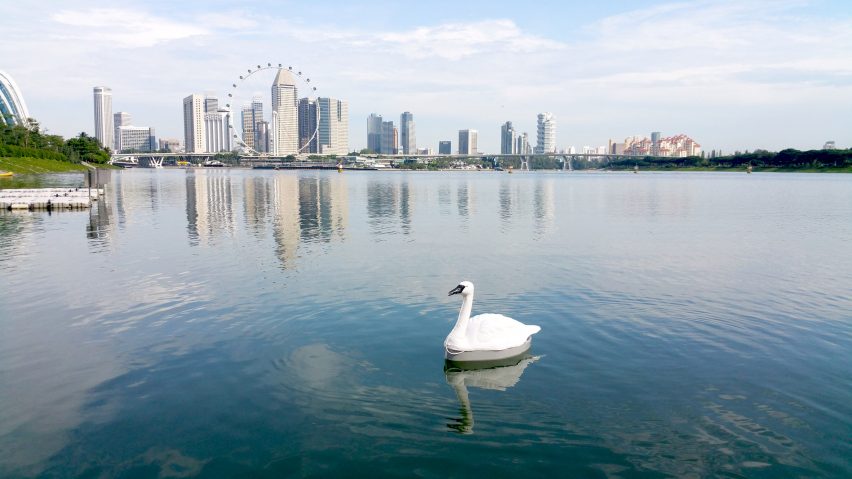Researchers from the National University of Singapore have created a bevy of robotic swans that test the quality of drinking water in Singapore's reservoirs.
The robotic birds, collectively named NUSwan, autonomously swim across the water's surface using underbody propellers.
Fitted with a number of sensors, they are designed to monitor the quality of freshwater lakes and reservoirs – such as levels of dissolved oxygen or chlorophyll – while blending in with the natural environment.
The team, made up of researchers at the National University of Singapore (NUS), believe the system offers a cheaper and less complex alternative to water-checking methods currently used.
"Freshwater reservoirs are complex environments that are highly dynamic over time and space. The water quality of the reservoir can be affected by factors such as increasing urbanisation, recreation and other human activities in the catchments," said the researchers behind the project.
"At present, water quality monitoring is typically conducted using fixed online stations which provide limited coverage, by taking a boat to fixed locations to collect grab samples, or by taking manual in-situ measurements, which are tedious and time-consuming," they added.
As the swans float on the water, wireless technology is used to stream real-time data results to a command centre. The actions of the swans can then be remotely altered by operators based on this data.
Additional sensors and actuators can be also added when necessary to increase the swans' monitoring abilities.
"By combining a miniature water grabber and in-situ water parameter probes in the NUSwan, operation staff or researchers can instantaneously decide to collect water samples for detailed laboratory analysis if the in-situ measurements suggest some irregularity," explained the team.
"This may be useful for water authorities to understand the relationship between the micro-ecosystem and water quality," they added.
The NUSwan is also designed to be utilised alongside other monitoring systems – such as NUS' underwater manta ray robot, which is used for underwater surveillance.
According to the researchers, the two robots complement each other in their operations, providing enhanced studies of both above and below the reservoir surface to better understand the environment as a whole.
Robots are increasingly being utilised in everyday life to monitor and improve our environments.
According to Arjen Bangma, who curated the Robotanica exhibition in held at Dutch Design Week last November, robotic creatures could be released into the wild to help restore damaged ecosystems, taking the place of extinct species.

